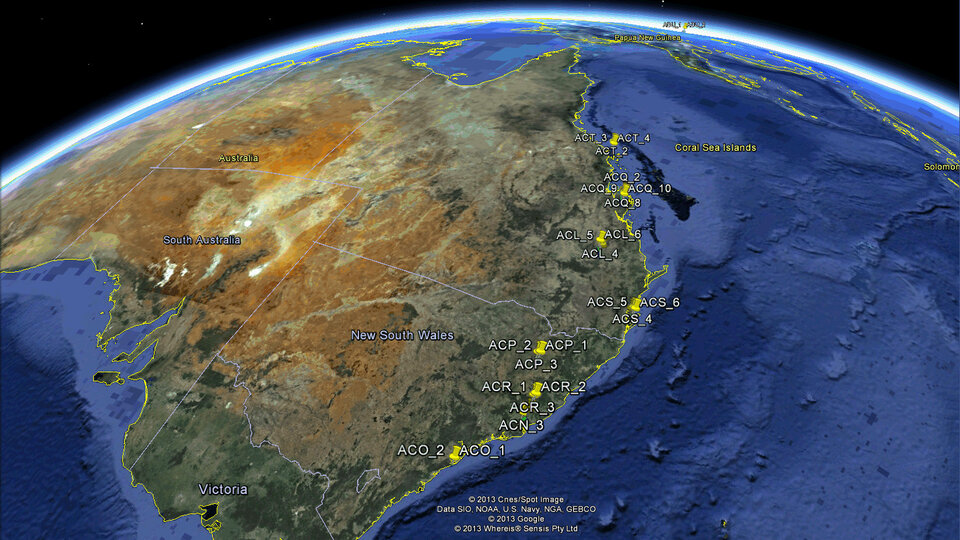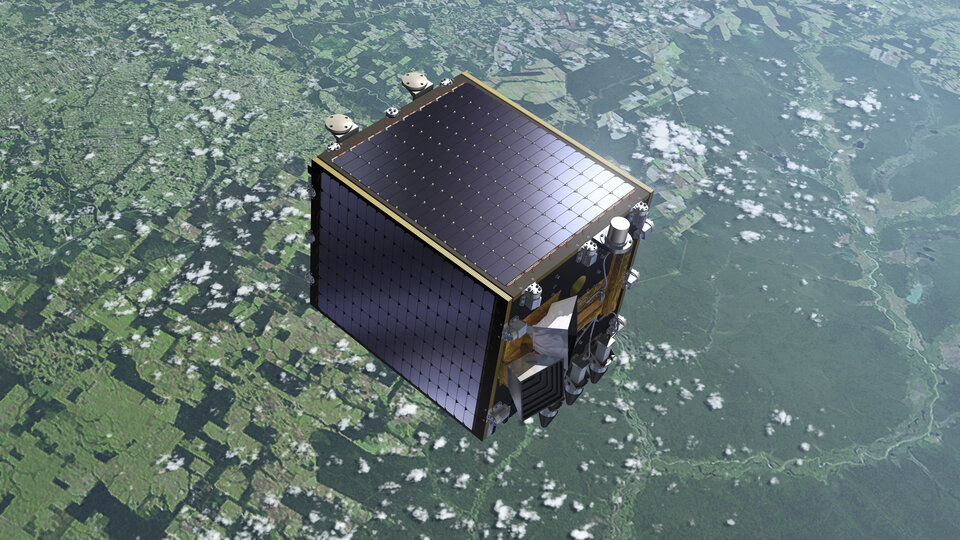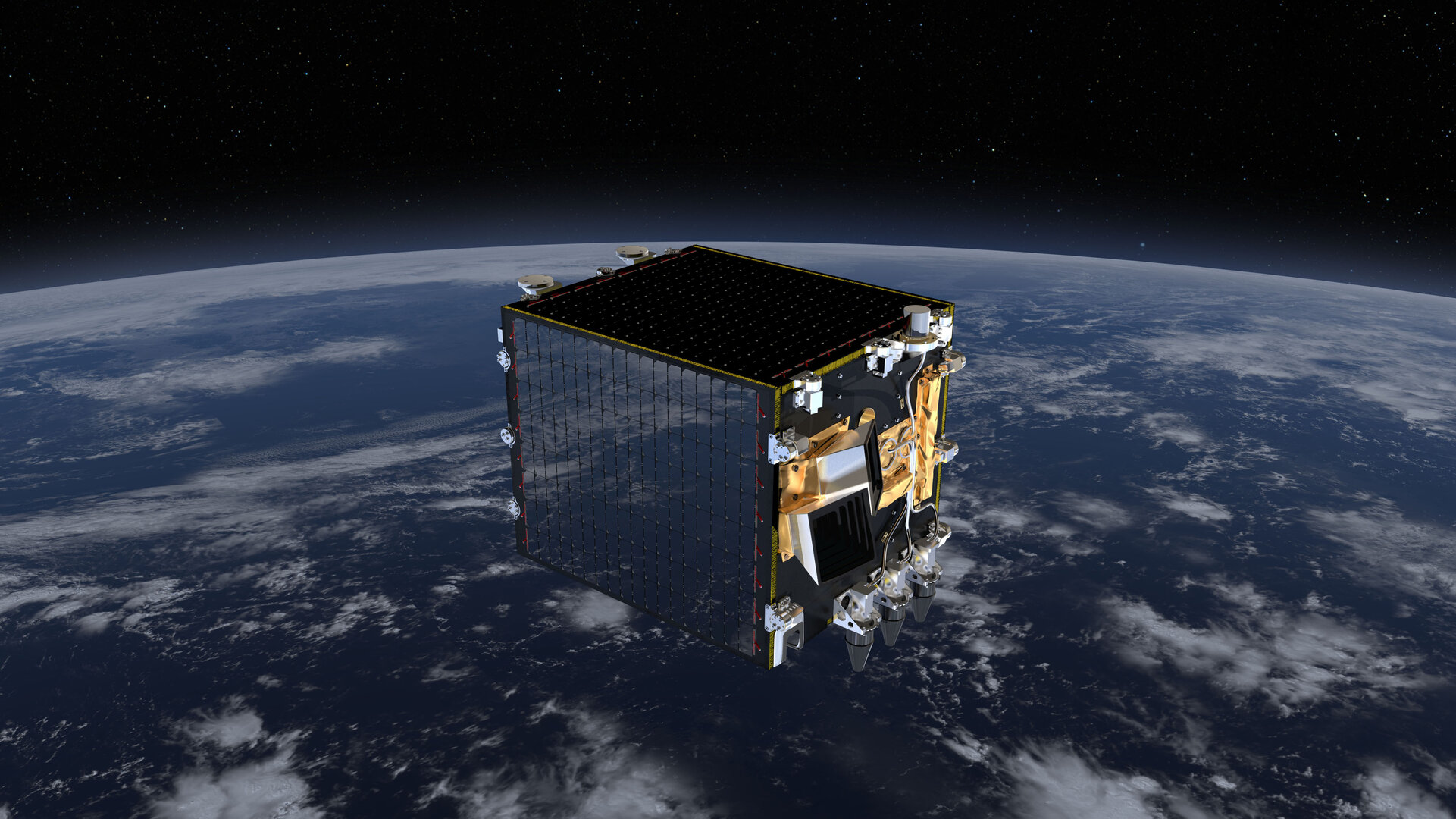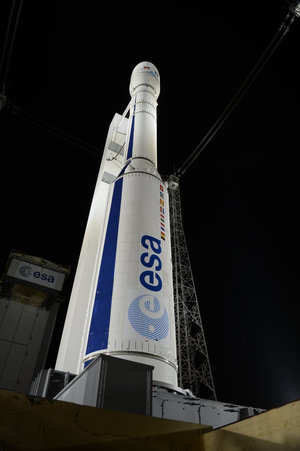Proba-V tracking aircraft in flight from orbit
ESA’s Proba-V has become the first satellite to pick up aircraft tracking signals, allowing aircraft across the globe to be followed in flight from space.
“We have succeeded in proving that these relatively low-powered air traffic control signals can indeed be detected from space as they are, without any need for upgraded aircraft equipment,” explained Toni Delovski of the DLR German Aerospace Center, overseeing the experiment.
“Now we want to go on and check how many aircraft we can actually observe in practice, and which types – different sized aircraft being assigned systems with differing signal strengths.
“This research opens the way to operational space-based aircraft monitoring in future.”

Launched on 7 May, Proba-V’s main task is to map vegetation growth, covering the whole world every two days. But the minisatellite – smaller than a cubic metre – also doubles as a miniature research lab, testing a number of promising technologies in space.
These ‘guest payloads’ include an experiment to detect Automatic Dependent Broadcast – Surveillance (ADS-B) signals from aircraft, contributed to the mission by DLR in cooperation with Luxembourg’s SES TechCom.
ADS-B signals are regularly broadcast from equipped aircraft, giving flight information such as speed, position and altitude. All aircraft entering European airspace are envisaged to carry ADS-B in the years ahead.
ADS-B ground systems are currently deployed as an add-on to ground-based radar monitoring for air traffic management.
“However, for most areas of the world, in particular oceans and remote regions, installing air traffic infrastructure based on radars or ADS-B stations is not economically or technically feasible,” Mr Delovski added.
“Instead, space-based ADS-B monitoring holds a lot of potential in terms of security and safety – including search and rescue for airspace not covered by ground-based surveillance. Filling in these gaps has obvious value.

“Moreover, it may allow aircraft to traverse regions with decreased separation between them and on more efficient routes, boosting overall traffic capacity while cutting fuel consumption and carbon dioxide emissions.”
“This is another success for ESA’s Proba series, dedicated to providing early flight opportunities to promising European technologies,” added Frédéric Teston, overseeing the Proba series of satellites as part of ESA’s Technology Flight Opportunities Programme.
About Proba-V

Currently undergoing commissioning in orbit, Proba-V is a miniaturised ESA satellite tasked with a full-scale mission: to map land cover and vegetation growth across the entire planet every two days.
It is the latest addition to the Proba family of small, low-cost space missions, giving flight experience to promising European technologies. So along with hosting its main instrument, Proba-V also provides early test flights for a variety of advanced guest payloads.
These include a pair of novel space-radiation detectors, a radio amplifier using the high-performance gallium nitride semiconductor and lightweight high-capacity optical fibre connectors.















 Germany
Germany
 Austria
Austria
 Belgium
Belgium
 Denmark
Denmark
 Spain
Spain
 Estonia
Estonia
 Finland
Finland
 France
France
 Greece
Greece
 Hungary
Hungary
 Ireland
Ireland
 Italy
Italy
 Luxembourg
Luxembourg
 Norway
Norway
 The Netherlands
The Netherlands
 Poland
Poland
 Portugal
Portugal
 Czechia
Czechia
 Romania
Romania
 United Kingdom
United Kingdom
 Slovenia
Slovenia
 Sweden
Sweden
 Switzerland
Switzerland



























